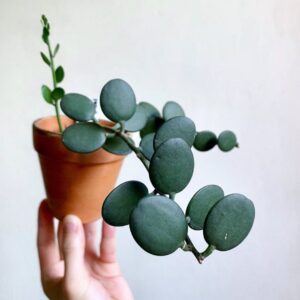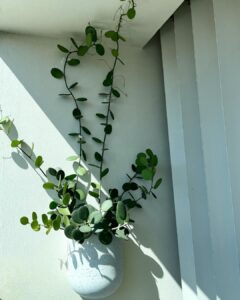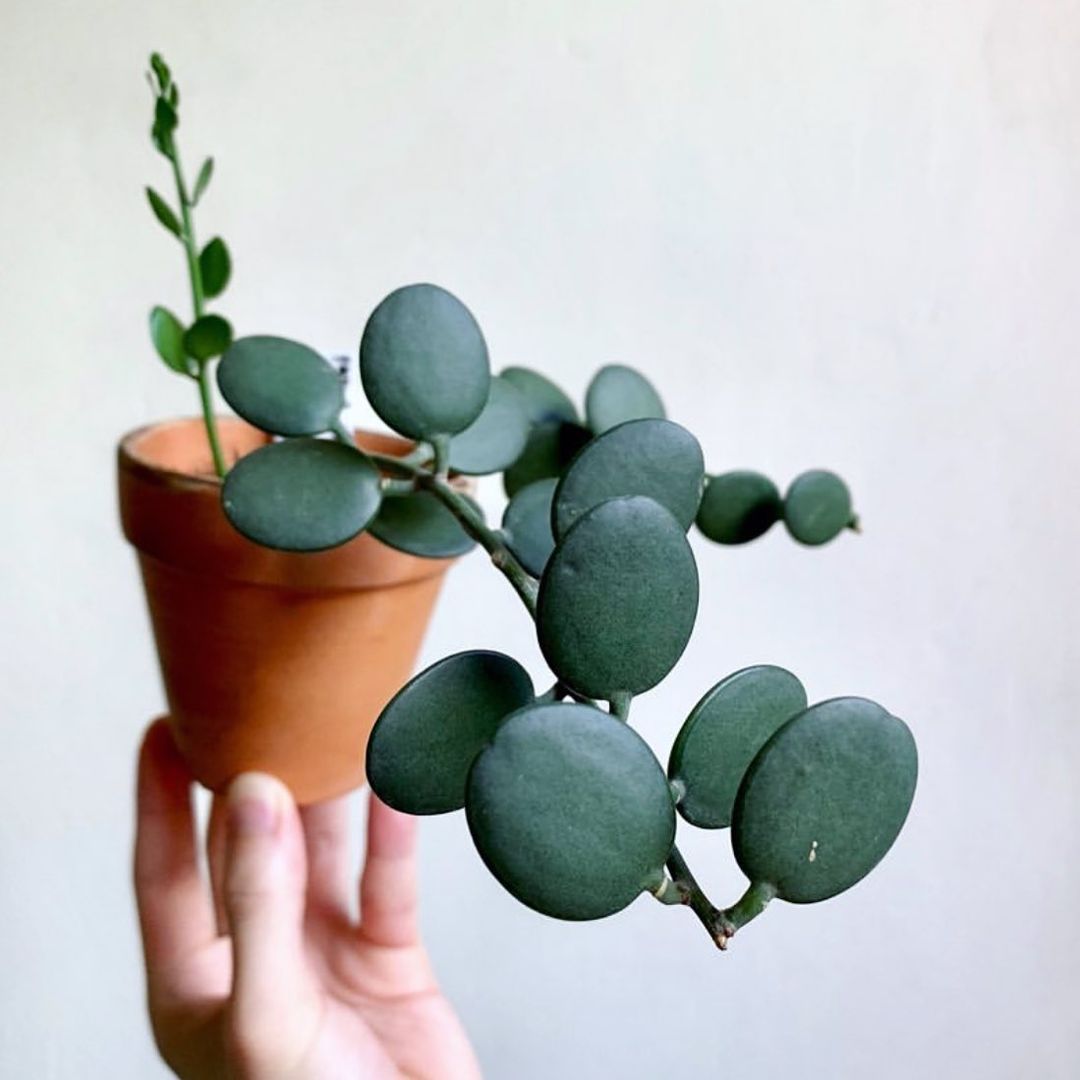Have a look at the Silver Dollar Vine Care tips and learn how to grow this succulent with our expert guide, which covers everything.
If you’re looking for a low-maintenance houseplant, the Silver Dollar Vine is a great option. With its unique appearance and easy care requirements, it can thrive in most indoor environments. In this article, we’ll go over everything you need to know about Silver Dollar Vine Care.
Common Names: Silver Dollar Plant, Penny Plant, Silver Dollar Vine, Dollar Vine
Botanical Name: Xerosicyos danguyi
USDA Zones: 9b-11b
Read: Tievine Care and Growing Information
Silver Dollar Vine

The Silver Dollar Vine comes originally from Madagascar. It belongs to the Cucurbitaceae family, which also includes cucumber and squash. This dioecious, fast-growing climbing succulent is capable of reaching heights of up to 12 feet when grown outdoors. The slender cylindrical stems branch from the base, bearing thick, fleshy grey-green leaves that are obovate to almost spherical in shape.
When grown from seed, it forms a caudex. The plant blooms with inconspicuous greenish-yellow flowers in early spring.
Propagation
Xerosicyos danguyi can be propagated using seeds, but stem cuttings offer a faster way to grow a reasonably sized plant. The ideal time for propagating Silver Dollar Vine is in early spring.
- To start, select a vine growing off the main stem and cut a 4 to 5-inch length with a couple of nodes.
- Remove all but the top leaves, and allow the stem cutting to sit for a few days to develop a callus on the cut end.
- Next, place the stem cuttings in a moist growing medium and keep them in a warm location.
- Within a few weeks, you should notice the development of roots.
- You can plant each Silver Dollar Vine baby in its own pot.
- This process ensures a healthy and vibrant plant that can be enjoyed for years to come.
Growing Needs of Silver Dollar Vine

Light
The silver dollar vine can tolerate partial sun; this succulent truly flourishes in full sun and bright light.
Whether grown indoors or outdoors, it benefits from exposure to ample sunlight. While growing indoors, it prefers bright spaces with plenty of natural light. Outdoor specimens can withstand full sun exposure without issue.
Soil
It prefers soil with a light texture and good drainage. While growing indoors in pots, use soil specifically formulated for succulents. The ideal pH is 6-6.5 or mildly acidic.
Water
The Silver Dollar Vine is highly resilient to drought and requires infrequent watering to avoid waterlogging. To maintain the plant’s optimal health, it is best to water it deeply once a month during the summer months.
If you plan to grow this vine in a pot during the summer season, it will need more frequent watering. It is important to allow the soil to dry out completely before watering again.
In the winter season, the plant should be kept dry and should not be watered on overcast, humid, or cold days.
Temperature
It prefers temperatures ranging from 68 to 80ºF (20 to 27ºC) during the day and 50 to 70ºF (10 to 21ºC) at night throughout its growing season. This resilient succulent can withstand high temperatures up to 104ºF (40ºC), making it an ideal plant for summer patios.
In the winter season, it prefers cooler temperatures ranging from 41 to 48ºF (5 to 9ºC). While the plant can tolerate light frost as low as 25ºF (-5ºC), it is recommended to bring it indoors during the winter months in temperate zones where temperatures drop below this range.
Humidity
The Silver Dollar Vine is habitual to low humidity levels in its native semi-desert environment, making it well-suited for indoor growth. Its ideal humidity range is 40% or less, which is standard for indoor environments. There is usually no need to increase the moisture levels around the plant, as excess humidity can lead to the growth of harmful bacteria or fungi.
Read: Thunbergia Erecta Clockvine Care
Silver Dollar Vine Care
Fertilizer
The Silver Dollar Vine requires minimal fertilization, but an annual light feeding can enhance its growth. A fertilizer ratio of 20-20-20 is ideal. Granular slow-release fertilizers can be used to provide nutrients gradually throughout the growing season. Spread the fertilizer on the soil surface and work it in slightly to the top inch.
Note: Liquid fertilizers can also be used, but it’s important to dilute them to half the recommended strength to avoid root damage.
Tip: Always apply fertilizer immediately after watering and distribute it evenly over the entire soil surface.
Repotting
Repotting the Silver Dollar Vine is recommended every 2 years, but annual repotting may be necessary if the plant becomes rootbound. Signs that the plant needs repotting include roots growing out of drainage holes or a lack of drainage due to excess roots. Choose an unglazed clay pot with adequate drainage holes and only increase the pot size by one to avoid overwatering.
Pruning
Regular pruning is necessary to maintain the shape of the Silver Dollar Vine. During the growing season in spring and summer, cut just below a node at a 45-degree angle to control excessive growth. Use sterilized shears when pruning. Remove dead or damaged leaves and spent flowers to prevent the spread of disease and insects.
Pests and Diseases
The most common pests for Silver Dollar Vine are mealybugs and aphids. Monthly spritzing with insecticidal soap or neem oil can prevent them. Mealybugs can be removed by wiping with cotton soaked in rubbing alcohol. They leave yellow/brown spots or cotton tufts on foliage.
Overwatering may cause root rot, which leads to yellow leaves, blackened roots, and a foul smell. Cut off the infected parts and repot them in fresh soil and a disinfected pot. Powdery mildew can develop if leaves are not kept dry. To get rid of this issue, try to improve air circulation near the plant.
Toxicity of Silver Dollar Vine
The Silver Dollar Vine is non-toxic to both humans and animals.



